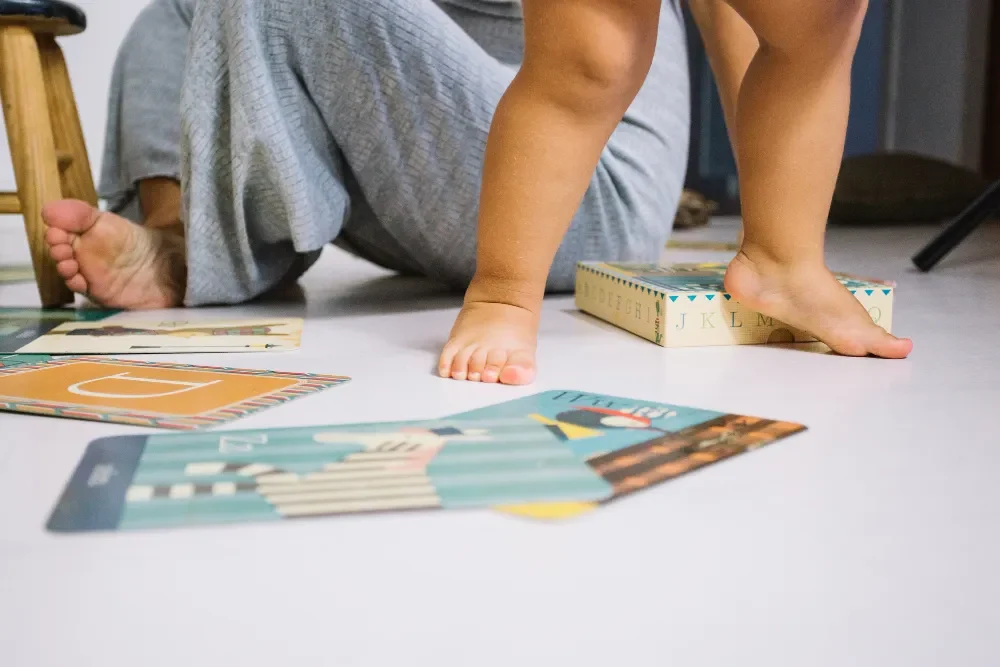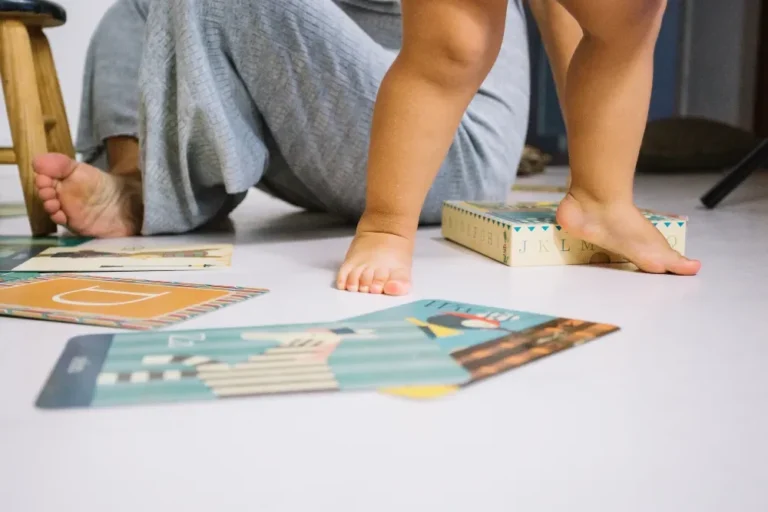Welcoming a newborn into the world is a whirlwind of joy, sleepless nights, and endless questions about what’s best for your little one. As a new parent, you’re likely bombarded with advice on feeding, sleeping, and diapering—but have you heard about newborn tummy time? This simple yet powerful practice is a game-changer for your baby’s physical and cognitive growth. Far from just a trendy parenting buzzword, tummy time lays the foundation for strong muscles, sharp motor skills, and even better sleep patterns.
In this comprehensive guide, we’ll dive deep into why newborn tummy time matters, how it boosts baby motor skills, and practical ways to incorporate infant floor play into your daily routine. Whether you’re a first-time mom or a seasoned parent looking for a development boost, you’ll walk away with actionable newborn tips to help your baby thrive. Let’s get started on this exciting journey of growth and discovery!
What Is Newborn Tummy Time and Why Should You Care?

Newborn tummy time refers to the supervised practice of placing your baby on their stomach while they’re awake and alert. It’s not about forcing your infant into mini push-ups (though that image is adorable!); it’s about giving them opportunities to explore their body’s capabilities in a safe, playful way.
The American Academy of Pediatrics (AAP) recommends starting tummy time as early as the first week after birth, beginning with just 2-3 minutes, 2-3 times a day. Why so soon? Because babies spend most of their time on their backs—to reduce the risk of Sudden Infant Death Syndrome (SIDS)—which can lead to weaker neck, shoulder, and core muscles if not balanced with tummy-down play.
Think of newborn tummy time as your baby’s first workout session. Just like adults hit the gym to build strength, infants use infant floor play to develop the muscles needed for rolling, crawling, and eventually walking. Skipping this crucial step can delay baby motor skills and even contribute to flat spots on the head (plagiocephaly).
Real-World Example: Sarah, a new mom from Chicago, noticed her 2-month-old, Liam, struggling to lift his head during diaper changes. After incorporating just 5 minutes of tummy time daily on a colorful play mat, Liam was holding his head steady by week three—and flashing big smiles while doing it!
The Science Behind Tummy Time: A Development Boost for Your Baby

Let’s geek out for a moment on the science. When babies engage in newborn tummy time, they activate key muscle groups:
- Neck extensors (to lift and turn the head)
- Shoulder girdle muscles (for arm support and reaching)
- Core stabilizers (for rolling and sitting)
These early exercises trigger neural pathways in the brain, enhancing proprioception—the body’s sense of position in space. Studies published in Pediatrics show that consistent tummy time correlates with earlier achievement of milestones like rolling over (around 4 months) and crawling (6-9 months).
Moreover, infant floor play stimulates sensory integration. The texture of a soft blanket, the sight of a dangling toy, and the sound of your encouraging voice all work together to wire your baby’s brain for learning. It’s no exaggeration to say that newborn tummy time provides a development boost that echoes through toddlerhood and beyond.
Hypothetical Scenario: Imagine two babies, Mia and Noah, both born in the same hospital. Mia’s parents prioritize 10-15 minutes of tummy time daily, while Noah’s family skips it due to fussiness. By 6 months, Mia is confidently rolling both ways and pushing up on her arms, while Noah needs extra physical therapy to catch up. The difference? A few minutes of daily infant floor play.
How to Start Newborn Tummy Time: Practical Newborn Tips for Success

Starting newborn tummy time doesn’t require fancy equipment or a PhD in child development. Here are some beginner-friendly newborn tips to ease into the routine:
- Choose the Right Time: Opt for moments when your baby is calm, fed, and alert—often right after a nap or diaper change.
- Create a Safe Space: Use a firm, flat surface like a clean blanket on the floor. Avoid soft beds or couches to prevent suffocation risks.
- Get Down to Their Level: Lie face-to-face with your baby to encourage eye contact and bonding.
- Incorporate Toys: Place a high-contrast toy or mirror just out of reach to spark curiosity.
- Keep Sessions Short: Begin with 1-3 minutes and gradually increase as tolerance builds.
Pro Tip: Skin-to-skin contact during tummy time enhances oxytocin release for both parent and baby, making the experience even more rewarding.
Step-by-Step Guide to Your First Tummy Time Session
To make things crystal clear, here’s a simple table outlining a beginner’s infant floor play routine:
| Step | Action | Duration/Tip |
|---|---|---|
| 1 | Lay baby on a firm, colorful blanket on the floor. | Ensure no hazards nearby. |
| 2 | Position yourself at baby’s eye level. | Sing a gentle song or make silly faces. |
| 3 | Place a safe toy 8-12 inches away. | Use black-and-white patterns for newborns. |
| 4 | Encourage head lifts with your voice. | Say “Look at Mommy!” enthusiastically. |
| 5 | End on a high note when baby shows tiredness. | Cuddle and praise lavishly. |
Follow this table for the first week, aiming for 2-3 sessions daily. By week two, extend to 5-10 minutes as your baby grows stronger.
Common Challenges with Newborn Tummy Time (and How to Overcome Them)

Let’s be real—not every baby loves newborn tummy time right away. Fussiness is common, especially in the first month. Here’s how to tackle typical hurdles:
- Challenge #1: Baby Cries Immediately Solution: Start with “tummy-to-chest” time. Hold your baby against your chest while you recline slightly. This semi-upright position eases them into bearing weight on their arms.
- Challenge #2: Flat Head Concerns Solution: Alternate tummy time with supervised back play and frequent position changes. Use a rolled towel under the chest (like a mini bolster) to reduce pressure on the skull.
- Challenge #3: Reflux or Discomfort Solution: Wait 30 minutes after feeding. If reflux persists, consult your pediatrician about upright holding techniques.
Myth Bust: “Tummy time causes discomfort and should be avoided.” Fact: Brief, supervised sessions are perfectly safe and recommended by the AAP. Discomfort usually stems from muscle fatigue, not harm.
Real Example: When little Emma screamed during her first tummy time attempt, her dad, Mike, switched to placing her on his chest while watching football. Within days, Emma tolerated floor time—and even giggled at the contrasting patterns on Dad’s shirt!
Long-Term Benefits of Consistent Infant Floor Play
The payoffs of newborn tummy time extend far beyond the newborn phase. Here’s what dedicated infant floor play can unlock:
- Advanced Motor Skills: Babies who master tummy time often sit independently by 6 months and walk by their first birthday.
- Improved Hand-Eye Coordination: Reaching for toys during floor play refines grasping and later, pincer grip for self-feeding.
- Better Sleep: Stronger core muscles lead to more efficient rolling, reducing night wakings caused by “stuck” positions.
- Cognitive Gains: Exploring from a new angle boosts spatial awareness and problem-solving.
A longitudinal study in Developmental Medicine & Child Neurology found that infants with 15+ minutes of daily tummy time by 2 months scored higher on cognitive tests at age 3. That’s a development boost with lifelong dividends!
Advanced Tips for Babies 3 Months and Older
Once your little one tolerates 10-15 minutes of newborn tummy time, level up with these strategies:
- Prop with a Boppy Pillow: Elevate the chest slightly to encourage arm extension.
- Tummy Time Tunnels: Crawl through a soft play tunnel together for giggles and gross motor practice.
- Mirror Play: Position a shatterproof mirror to promote self-recognition and longer sessions.
- Sibling Involvement: Let older brothers or sisters lie nearby with books—peer motivation works wonders!
Hypothetical Scenario: At 4 months, baby Zoe’s parents introduce a small foam wedge during tummy time. By 5 months, Zoe is scooting backward to reach toys, delighting the whole family with her newfound mobility.
Making Tummy Time a Family Affair
Infant floor play isn’t just a solo activity—it’s a bonding opportunity. Involve partners, grandparents, or even the family dog (supervised, of course!). Create a “tummy time corner” with a dedicated mat, soft lighting, and a basket of sensory toys. Rotate toys weekly to maintain novelty.
Newborn Tip: Record short videos of tummy time milestones. Not only do these make heartwarming keepsakes, but they help track progress and share with your pediatrician if concerns arise.
Safety First: Guidelines for Worry-Free Newborn Tummy Time
While newborn tummy time is low-risk when done correctly, always prioritize safety:
- Never leave baby unattended—even for a second.
- Supervise actively—stay within arm’s reach.
- Avoid post-feeding sessions if reflux is an issue.
- Stop if baby falls asleep—transition to back sleeping in a crib.
- Consult your doctor if preterm birth, neck stiffness, or other medical concerns exist.
Following these newborn tips ensures infant floor play remains joyful and secure.
Integrating Tummy Time into Daily Routines
Consistency is key to reaping the development boost from newborn tummy time. Try these seamless integrations:
- Post-Diaper Change: A quick 2-minute session on the changing mat.
- Morning Playtime: Pair with sunlight exposure for vitamin D.
- Bath Time Prelude: Tummy time on a towel before splashing.
- Sibling Storytime: Older kids read board books while baby practices nearby.
Over time, these micro-sessions add up to 20-30 minutes daily—the sweet spot for optimal baby motor skills.
Conclusion: Start Your Baby’s Strength Journey Today
Newborn tummy time is more than a recommendation—it’s a cornerstone of healthy development. By embracing infant floor play, you’re gifting your baby stronger muscles, sharper baby motor skills, and a brighter developmental future. The journey from wobbly head lifts to confident crawling starts with just a few minutes on the floor.
Don’t wait for the “perfect” moment. Grab a blanket, get down on the floor, and watch your little one blossom. Your encouragement today builds their strength tomorrow. Start implementing these newborn tips right now—your baby’s future self will thank you!
Frequently Asked Questions (FAQs)
When should I start newborn tummy time?
Begin as early as 1-2 weeks old with 2-3 minutes, 2-3 times daily, gradually increasing duration.
What if my baby hates tummy time?
Start with chest-to-chest time, keep sessions ultra-short, and use engaging toys or your face to distract and comfort.
How does tummy time help baby motor skills?
It strengthens neck, shoulder, and core muscles essential for rolling, sitting, crawling, and walking.
Can too much tummy time be harmful?
No, when supervised and gradual. Stop if baby shows distress; aim for 15-30 minutes total daily by 3 months.
Are there alternatives to floor-based infant floor play?
Yes—try tummy time on your chest, over your lap, or using a firm nursing pillow for variety.
Improving parenting skills and communication










